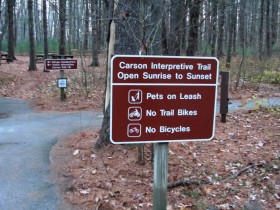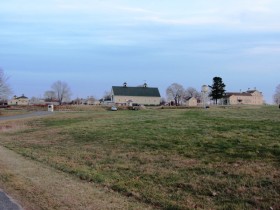Kennebunk Plains, McGuire Road, Kennebunk. This 1,000-acre sandplain community provides vital habitat for the endangered grasshopper sparrow and four other animals and plants of special concern in Maine. Managed by the Nature Conservancy, acquired with a grant from the Land For Maine’s Future Board.
Butler/Marshall Preserve, Kennebunk. The Kennebunk River bisects the two preserves which together span 195 acres, and over a half-mile of river frontage. The area is predominantly pine forest. Picnic Rock, a large glacial boulder, is a popular spot for picnicking and swimming. Managed by the Nature Conservancy. Off Old Port Road.
East Point Sanctuary, Orcutt Boulevard, Biddeford Pool. 30 acre sanctuary offers beautiful ocean views and is considered one of the best spots for birding in southern Maine. A wide variety of waterfowl visit the point and harbor seals can be seen fishing off shore. Managed by Maine Audubon Society. Lester B.
Goosefare Brook, Saco. This 309-acre waterfront parcel was purchased by the Conservancy as an addition to the Rachel Carson National Wildlife Refuge.
Rachel Carson National Wildlife Refuge covers 5,200 acres of marsh and upland wildlife habitat from Kittery to
Cape Elizabeth. A mile-long trail (handicapped-accessible) offers accessibility to vistas of the marshes and the ocean, plus many kinds of shorebirds, ducks, and geese. The trail begins at the refuge headquarters on Route 9 at the Wells/Kennebunk line.
Shapleigh Woods, Shapleigh. This 265-acre preserve, managed by the Nature Conservancy, will ensure protection for one of the world’s largest known populations of the federally endangered small whorled begonia.
Waterboro Barrens, Waterboro and Shapleigh. The 2,140-acre Nature Conservancy preserve is one of the largest and best preserved pitch pine barrens in Maine. According to writer Jeff Clark,
Some 12,000 years ago, the outwash of meltwater from the receding glaciers of the last Ice Age created huge beds of sand and gravel – the layer runs ninety feet thick in Waterboro – that drain water too easily and hold nutrients not at all. Early farmers learned quickly that such places were perpetually droughty and produced poor-to-nonexistent crops. Only the toughest, most persistent plants and trees could gain a foothold.”
The barrens, located near Lake Sherburne, last burned in the forest fires that swept the state in 1947. Pitch pine, however, are very fire resistant.
Wells National Research Reserve, Wells. Educational and research facility with 1,600 acres, 7 miles of trails that take you through old fields, woods, marshes and to the beach. During the summer there are guided tours, junior research programs and research projects on birds, the sea level and water.
Wood and Stage Islands, Biddeford. Both islands are important nesting areas for waterfowl. A wooden boardwalk leads to an abandoned Coast Guard Lighthouse on Wood Island. Stay below high-tide line during nesting season. Accessible only by boat. Managed by Maine Audubon Society.
Additional resources
Clark, Jeff. “The Curious World of Waterboro Barrens.” Down East. June, 2002.



